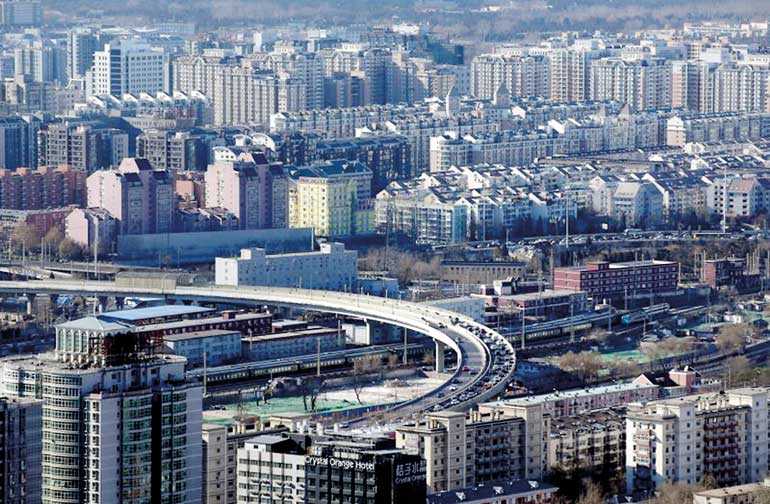Saturday Dec 14, 2024
Saturday Dec 14, 2024
Monday, 20 January 2020 00:13 - - {{hitsCtrl.values.hits}}

FILE PHOTO: Residential buildings in Beijing
BEIJING (Reuters): China’s economic growth slowed to its weakest in nearly 30 years in 2019 amid a bruising trade war with the United States and sputtering investment, and more stimulus steps are expected this year to help avert a sharper slowdown.
But data on Friday also showed the world’s second-largest economy ended the year on a firmer note as trade tensions eased, suggesting a raft of growth boosting measures over the past two years may finally be starting to take hold.
This year is crucial for the ruling Communist Party to fulfil its goal of doubling GDP and incomes in the decade to 2020, and turning China into a “moderately prosperous” nation.
Fourth-quarter Gross Domestic Product (GDP) rose 6% from a year earlier, data from the National Bureau of Statistics showed, steadying at the same pace as the third quarter, although still the weakest in nearly three decades.
That left full-year growth at 6.1%, the slowest annual rate of expansion China has seen since 1990. Analysts had expected it to cool from 6.6% in 2018 to 6.1%.
“I think it (the apparent stabilisation of growth in the fourth quarter) is sustainable,” said Louis Kuijs of Oxford Economics in Hong Kong.
“We have seen improvement in industry. We have seen efforts (from policymakers) to make sure the economy continues to grow, especially efforts in the financing of infrastructure.”
Policy sources have told Reuters that Beijing plans to set a lower economic growth target of around 6% this year from last year’s 6-6.5%, relying on increased infrastructure spending to ward off a sharper slowdown.
On a quarterly basis, the economy grew 1.5% in October-December, also in line with expectations and the same pace as the previous three months.
More signs of improvement
December data released along with GDP showed a surprising acceleration in factory output and investment growth, while retail sales grew at a steady, solid pace.
Industrial output grew 6.9% in December from a year earlier, the strongest pace in nine months. Analysts had expected growth to dip to 5.9% from 6.2% in November.
Fixed-asset investment rose 5.4% for the full year, versus expectations for a 5.2% increase, the same as in the first 11 months of the year. Retail sales rose 8% in December on-year, compared with forecasts for 7.8% and November’s 8%. Real estate investment rose 9.9% in 2019, slowing slightly from 10.2% in the first 11 months of the year. But growth in December slipped to a two-year low as authorities continued to clamp down on speculation to keep home price rises in check. Beijing has been relying on a mix of fiscal and monetary steps to weather the current downturn, cutting taxes and allowing local governments to sell huge amounts of bonds to fund infrastructure projects.
Banks also have been encouraged to lend more, especially to small firms, with new yuan loans hitting a record 16.81 trillion yuan ($2.44 trillion) in 2019.
The economy has been slow to respond, however, and investment growth had slid to record lows.
Even with additional stimulus and the trade war truce, economists polled by Reuters expect growth will cool further this year to 5.9%.